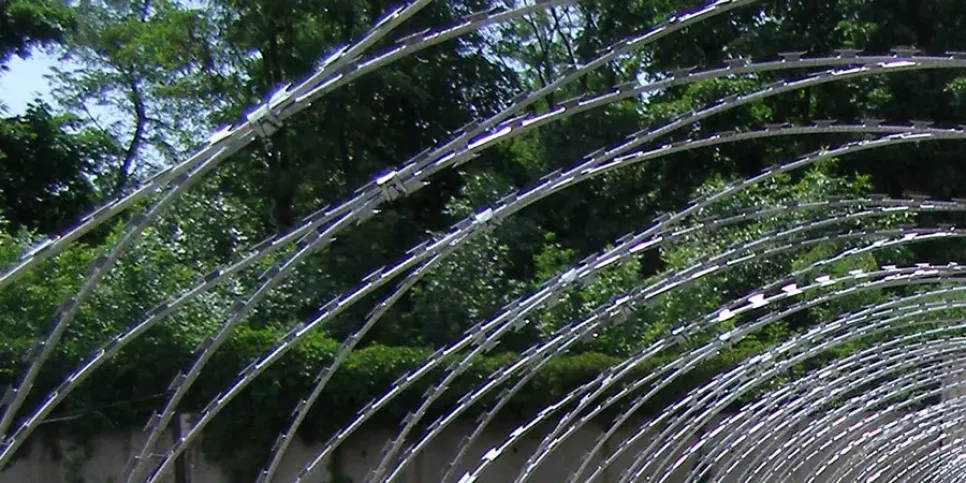
The Main Parameters of the Concertina
In our labeling of the concertina wire, three parameters are always mentioned – the diameter of the core of the razor wire, the diameter of the concertina and the number of clips. Three variable characteristics products have many finish options, and that's not including razor tape, which comes in a variety of thicknesses, widths and blade lengths. But in reality, not everything is so complicated – there is no infinite variety of concertina options, there are a number of barriers with an optimal combination of wire diameters, the concertina diameters and the number of clips.
What Affects the Core Diameter of the Razor Wire?
The diameter and material of the core directly affects the strength of the most razor wire – the larger the diameter of the core and the higher the strength of the wire material, the more difficult it is to bite. The same parameters directly affect the diameter of a concertina that can be made from such a razor wire. The higher these parameters, the larger the diameter of the concertina can be made without reducing its strength and spring properties. But the manufacture of a concertina of small diameter from razor wire of large diameter can not only increase its strength, but reduce its protective properties as a whole. The thing is that for effective operation of the concertina, it must spring and temporarily deform under external influence, and too thick and strong razor wire will turn it into a rigid structure.
The Effect of the Number of Staples on other Characteristics of the Concertina Wire
Connecting clips are an integral element of the design of the concertina wire. Clips connect adjacent turns of a spiral of razor wire, forming an “accordion” out of it. The presence of clips increases the strength and spring properties of the concertina compared to a spiral barrier that does not have clips at all. In general, the number of clips directly depends on the diameter of the concertina. For example, for a concertina with a diameter of 400 mm, 3 clips are enough, while a concertina wire with a diameter of 1700 mm will require a minimum of clips. The number of clips also directly depends on the diameter of the razor wire – the larger its diameter, the fewer clips can be installed on a concertina of the same diameter. But there is another parameter that is affected by the number of clips – the length that the concertina is stretched during its installation. With the same diameters of the core of the razor wire and the same diameters of the concertina, the length of its stretching is inversely proportional to the number of clips. The more clips in the concertina, the smaller its installation length.
How Many Staples Should There Be in a Concertina?
Based on the foregoing, there is a model range of optimal combinations of the concertina diameter and the number of clips. For example, for a concertina wire made of razor wire with a diameter of 2.8 mm, the optimal row is as follows:
- diameter 500 mm – 3 clips;
- diameter 600 mm – 3 or 5 clips;
- diameter 730 mm – 5 clips;
- diameters 850 and 980 mm – 5 or 7 clips;
- and diameters from 1100 to 1500 mm – 7 or 9 clips.
With a decrease in the diameter of the razor wire, the number of staples increases, and with an increase, they can be installed less without reducing the effectiveness of the barrier.